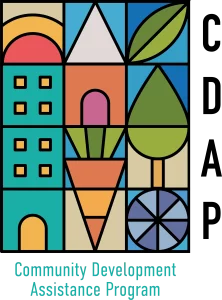Technology is changing the world in ways that would have seemed straight of a science fiction novel just a few years ago. And nowhere is that more evident than in the area of transportation. From being able to access real-time traffic conditions on smartphones, to vehicles that can communicate and share information with traffic signals and each other, and to cars that don’t even need a driver, we are in the midst of a transportation revolution.
The ways in which we travel is undergoing a shift as significant as the conversion from the horse and buggy era to automobiles was over a century ago. The changes we are witnessing have the potential to fundamentally reshape our world in ways that are difficult to foresee, similar to how many citizens of the early 20th century could not imagine interstate highways, suburbia and the decline of the passenger rail industry. As challenging as forecasting the world of tomorrow might be, ARC has a number of programs and initiatives attempting to do just that.
Scenario Planning
ARC has a long track record of analyzing the differences in a variety of land use and transportation system assumptions. Until recently, however, those scenarios generally assumed that how and why people move around in the future will continue to be more or less the same as today. That is likely not a reasonable assumption in today’s rapidly changing world.
Nine key disruptive influences, or drivers of change, were identified and woven together to form four very different alternate futures. These scenarios considered, among other things, how technological advances relate to the greying of the population, equity considerations and the delivery of goods and services. Findings were published in 2017 and ARC will use insight gained from the effort to guide future policy discussions and development of future iterations of the Metropolitan Transportation Plan (MTP).
Regional Transportation Technology Policy Document
This document provides insight into identified key technology trends within the field of transportation and their related policy implications for the Atlanta region and beyond. As such, it will serve as an important step in the development of a comprehensive strategic plan to address technology-related issues in future plan updates.
Congestion Management Process
Federal law requires metropolitan areas to have a congestion management process, under which agencies such as ARC work with state and local planning partners to identify and mitigate congested roadways and bottlenecks. The MTP serves as the Atlanta region’s “congestion management process” and incorporates a number of programs and strategies to meet the federal requirements, many of which make use of advanced technology.
TSM&O and ITS
More and more cities and regions are focusing on management and operations as a cost-effective solution to improve the mobility, reliability and accessibility of their transportation systems. Transportation Systems Management and Operations (TSM&O) is a set of strategies that focus on operational improvements that can maintain and even restore the performance of the existing transportation system before extra capacity is needed. Many solutions are part of the TSM&O toolbox including Intelligent Transportation Systems (ITS) and roadway design.


